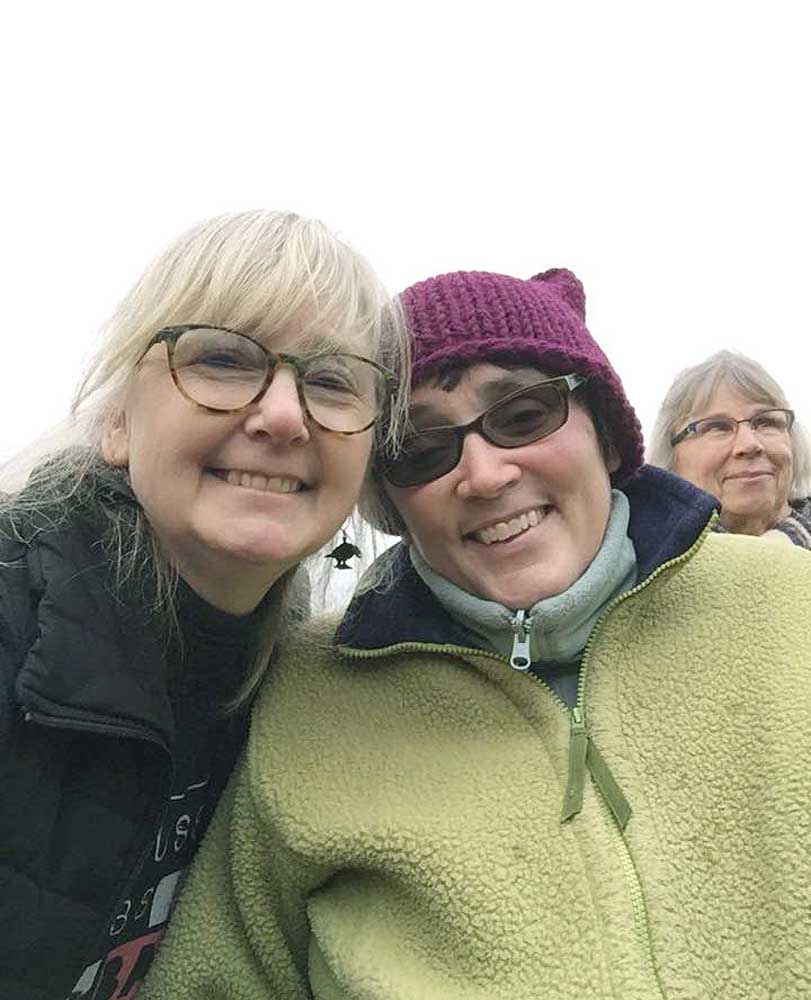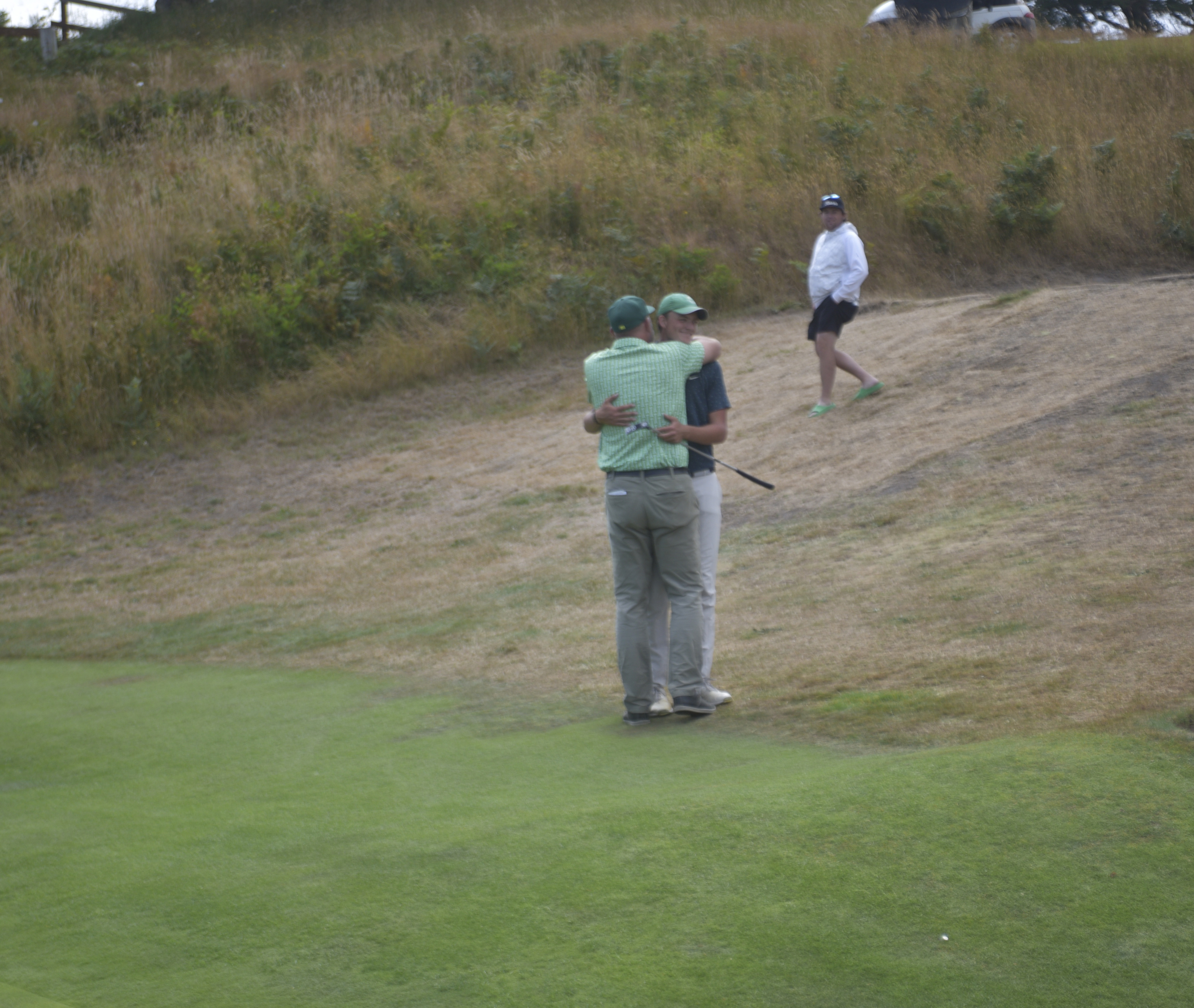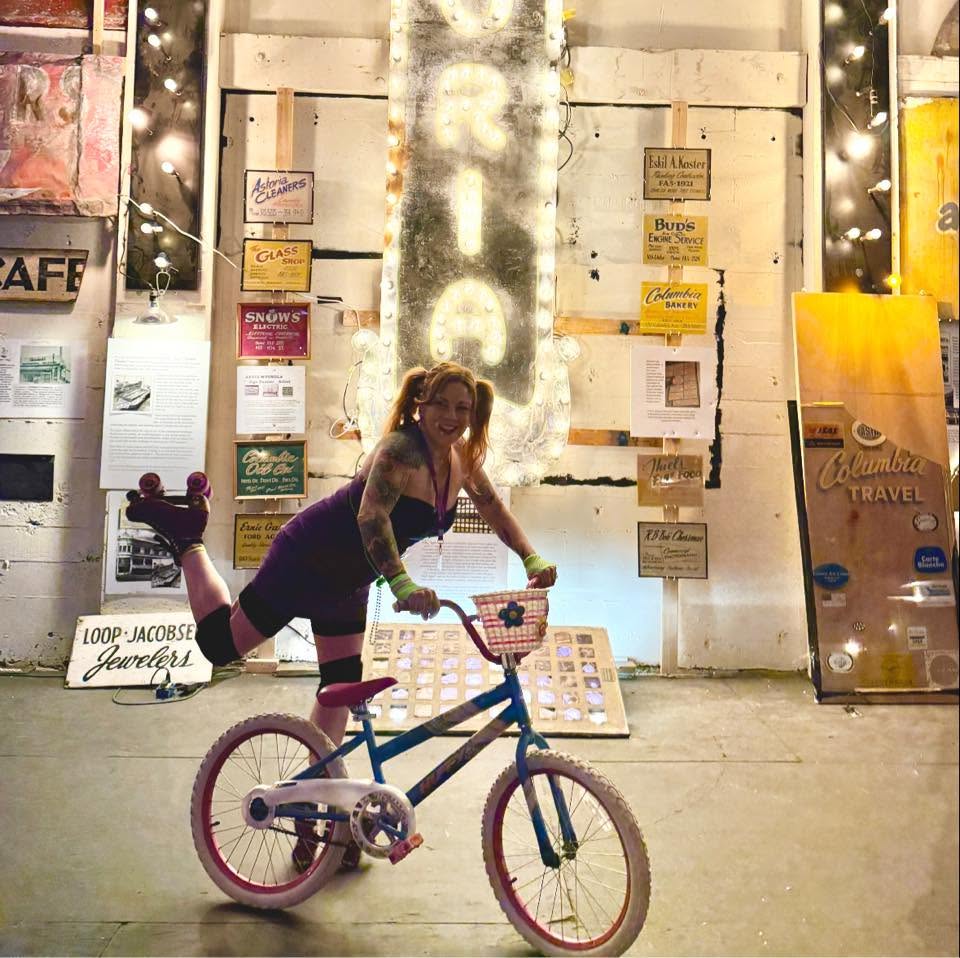Even so Marching to counter despair and anger
Published 10:58 am Monday, January 30, 2017

- From left, friends Denise Moore, Joan Herman and Wendela Howie (background) await the start of the march at Heritage Square.
The six of us certainly don’t look like a bunch of rabble-rousers.
Trending
Ranging in age from late 50s to late 60s and bundled in our fleece and down, we appear to be heading out for a stroll — or roll, in my case — through the neighborhood on this overcast morning in Astoria.
Yet our faces reveal an undeniable expression of excitement, even joy, as we set out to exercise our First Amendment rights. We will join some 1,300 participants in downtown Astoria in the first ever Women’s March, one of hundreds of such events that occurred around the nation and the world on Jan. 21.
Lest you underestimate the fortitude and passion of a group of old women to get things done, you would be wise to remember the example set by Elizabeth Cady Stanton and Susan B. Anthony, who for decades worked tirelessly to gain American women the right to vote. That right was finally won in 1920 with the ratification of the 19th Amendment.
Trending
Our reasons for marching are no less ambitious: to do what each of us can to ensure that equality and justice for all remain our abiding American principles; that the most vulnerable among us are cared for; that our Social Security and Medicare are not gutted; that our public school system is not further compromised; that no one is barred from entering the country due to religion or nationality; that bullying does not become an accepted norm; that our environment is protected for future generations; that reproductive rights remain the province of women and not the government — I could go on.
Calling this a ”women’s march” mischaracterizes the event, as it embodied so much more. Participants included many men and children, as well as a few dogs.
On this brisk day, I appear to be one of a handful of wheelchair marchers in a crowd that stretches blocks long, four and five bodies deep across the sidewalk. My dear friends create a protective bubble around me to help clear a path through the throng of marchers as we wend our way through downtown.
Thanks to the Americans with Disabilities Act, all downtown sidewalks — as well as many others throughout town — have curb cuts, without which the march would be impossible for me and the other wheelchair users.
As we walk and roll, a bearded marcher near me begins booming out ”equality and justice for all,” and in unison we shout back his words repeatedly as we head east on Commercial Street.
Shopkeepers come out to thank us, and dozens of motorists toot their horns in support. In fact, I witnessed no aggressive responses to our demonstration, though I heard that one driver gunned his truck loudly as he raced by the marchers.
For me, a person living with a physical disability due to multiple sclerosis, the march is especially personal. One reason is the simple fact that I can do it, at a time when so many activities I would love to participate in (hiking and skiing, for example) are no longer possible.
In my small way, I march for others living with disabilities. To a great extent, many of them are invisible because they cannot get out as I still can, nor do they have a public forum, as I thankfully do. Even if you can’t see us, we are still here. We need to be heard.
I march to counter the despair and anger I feel when I think about the then-future president publicly mocking, like a middle-schooler, a disabled news reporter.
But far more hurtful to me, and I know many others, is the denial that I read on almost a daily basis by fellow Americans who insist the then-presidential candidate was doing nothing of the sort.
What as a nation, not to mention human race, have we devolved to if we accept this behavior by rationalizing it? What abuse — and it is abuse — will we permit next? Who will be the target? How can we tell children not to bully others if the nation’s most visible role model, for better or worse, gets away with it?
Now the march is over. We participants felt exhilarated for a day, but we know our efforts are just beginning. In a one-person-at-a-time kind of way, we must work to retain our rights — indeed, our civility.
Laugh at us, if you must, but I draw inspiration from thinking about the many Americans throughout our beloved country’s history who labored long and hard for our inalienable rights as human beings.
And I remember my beautiful Aunt Joan, who, the summer before she was to enter Radcliffe College in Massachusetts, was rendered a quadriplegic by polio. Nonetheless, she would become instrumental in the nascent movement to create assisted living facilities for the many young people disabled by polio in the 1940s and 1950s in America.
What can I, a “cripple” in a wheelchair, possibly do to affect change?
Plenty.
Joan Herman is a second-time Astorian who was co-owner of Bikes & Beyond and a former reporter for The Daily Astorian. She contributes occasional columns about living with disabilities.









